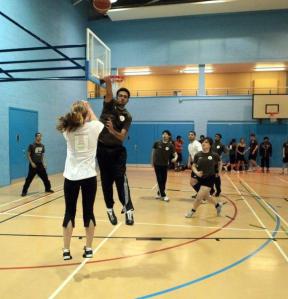– Sam Dilliway –
We’ve not written for the past couple of weeks because of Olympic fever! Now that it’s finished i’m thinking about what makes it valuable.
There is the obvious inspiration towards physical activity and the celebration of national successes. It seems from reading UK news sites for The Telegraph and Guardian, and the huge amount of positive comments on facebook, that many people in the UK have been very enthused about these games and the unparalleled success of GB’s “best-ever” team.
In a country that in recent years has been overly familiar with news of financial doom, security threats and corruption in politics, it seems the ability of the country to successfully stage such a fun and enjoyable games has really lifted the “collective mood,” if there is such a thing.
There is also the idea of the Olympic Truce (ékécheiria in Ancient Greek) where originally a truce between warring countries was announced before and during the Olympic Games, in order that participants and spectators could travel safely to the games. The Olympic bigwigs have picked this up again since 1992 and the UN has adopted resolutions to build Peace through Sport. It’s not something I know a huge amount about, but it seems a worthy idea.
Another topic that seems to have been front and centre is of the impact caused by successful immigrants upon racial discourses in a country they excel in and represent at sports. In my conversation with Dr Rhys Kelly before I left Bradford, he suggested a very interesting piece of research could be to look at the impact the success of top foreign footballers have upon fans that have previously exhibited racism and extreme-right sympathies. What is the impact on a racist Londoner who comes to worship Thierry Henry because he is an Arsenal fan? When I was a kid, my local team was Millwall. I wasn’t taken to their games until I reached a suitable age, but I remember in the all-standing terraces terrible racial abuse directed at black players, who were always apprehensive about playing at The Den.
Conversations such as these have been initiated during these Olympics thanks to the success of such athletes as Jessica Ennis and Mohammed Farah. Ennis has one British parent and one Jamaican parent, a fact that has been drawn upon to show the new multi-cultural Britain.

Jessica Ennis/GB Flag
Farah, who arrived from Somalia to London at age 8, is a fanatical Arsenal FC fan, and his success has been seized upon to show the positive impact a refugee can have upon the country.

Farah wins Gold
In an article for the Guardian, Tom Clark and Owen Gibson write about the results of a Guardian/ICM poll, which attempted to find some answers in this area:
“By a two-to-one margin of 68% to 32%, respondents agree that modern Britain is stronger as a country of many cultures, support for multiculturalism that rises to 79% in London and 81% among the very youngest respondents, aged 18-24.
On the other hand, after being reminded of the success of minority ethnic Britons such as the Somali-born 10,000m champion, Mo Farah, voters remain inclined to doubt that most newcomers do anything positive for Britain. By a narrow 53%-47% margin, the survey finds agreement for the suggestion that “More often than not immigrants … do not bring anything positive, and the likes of the Olympic-winning athletes are an exception”.
Faith in the contribution of immigrants is much stronger in London, where 62% disagree with this statement, and a majority of respondents aged under 45 likewise disagree, but among pensioners there are particularly marked doubts about newcomers – with 64% of the over-65s describing the Olympians as “exceptions”.
So, whilst there is support for the idea of multiculturalism, and a belief in the positive contributions of immigrants from residents in the Capital (the most multicultural of the UK’s Cities), the idea that newcomers bring something positive is supported less by older people, and those outside London. Interesting but not surprising. I wonder what such a survey would find in my City, Bradford, where there has been significant tension between British and immigrant communities from India and Pakistan, now into their third generation in the UK.
“Attitudes harden further when the question switches to immigration in general. Only 32% of respondents say the Olympic successes make them “more positive (or less worried)” about it, against just 68% who disagree.”
Whilst some of the 68% may simply feel the Olympics do nothing to change an already positive and unworried position on immigration, my feeling here is that respondents found it harder to make a link between Olympic success and economic gain to the country, where discourses around unemployment and the causal effect of immigration over the past five years have often hit the headlines, particularly in newspapers such as The Daily Mail. Nevertheless, it is interesting to me that respondents think multiculturalism is positive, but are still worried about immigration. Perhaps they wish to show toleration for all those already in the UK, but are worried about more arrivals? I would guess that the bad state of the economy must be a prime factor in this.
Does this small survey provide any evidence that the Olympics has assisted in creating a culture of peace through improving toleration? I would suggest that the answer is that it is inconclusive: while thinking towards multiculturalism was positive, there was still significant adverse feeling about immigration. In addition, the more negative views from those outside of London and over 45 years of age could be a cause for concern, though it is positive that the age-range most likely to be inclined to violence, those aged 18-24, showed stronger support for multiculturalism.









